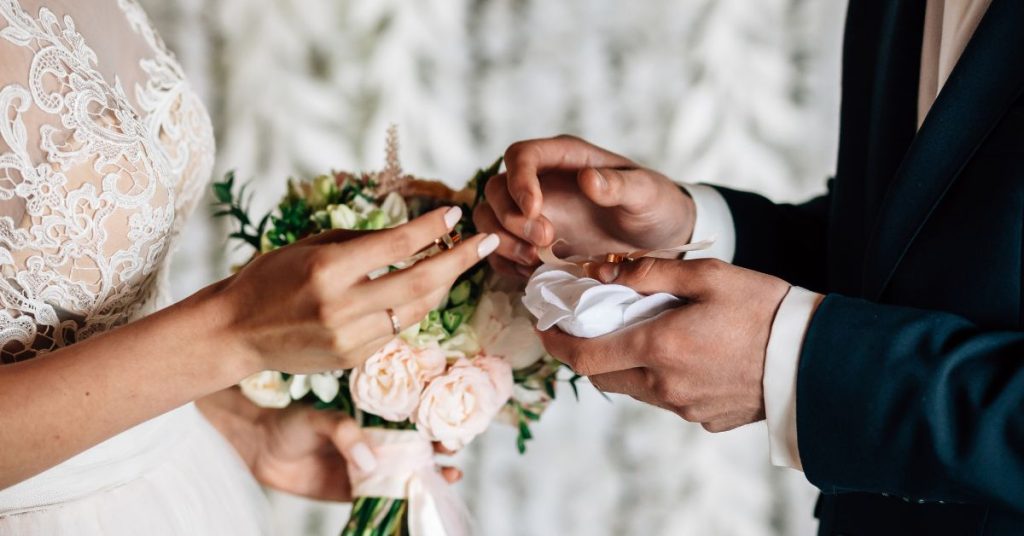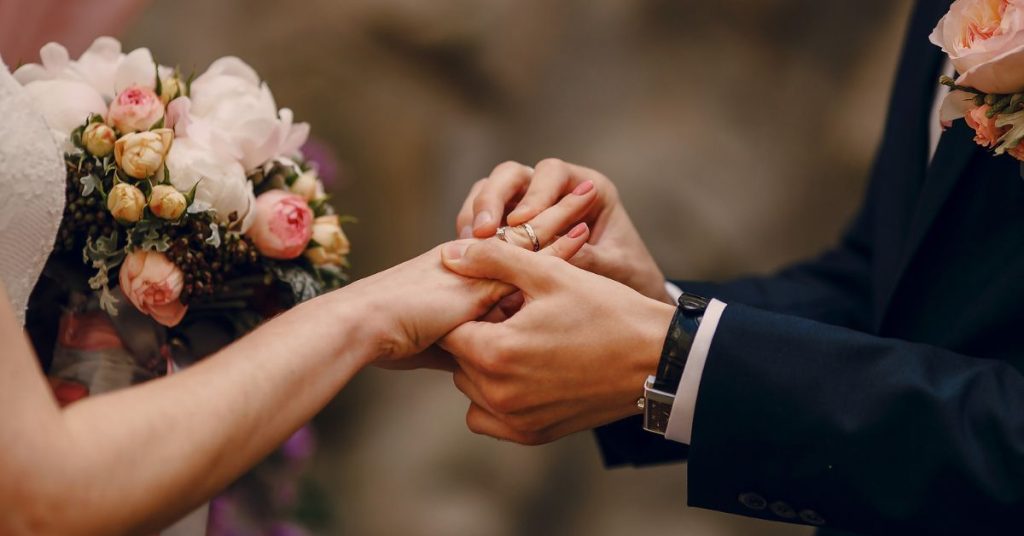In the realm of love and commitment, few symbols carry as much significance as the engagement ring and the wedding band. More than mere pieces of jewelry, they are heartfelt expressions of a couple’s shared journey, timeless markers of their commitment, and, of course, beautiful adornments that deserve careful selection and meaningful consideration. In this comprehensive guide, we delve into all things related to engagement rings and wedding bands.
From their rich history and symbolic significance to the multitude of styles, metals, and gemstones available, we’ve compiled everything you need to know. Whether you’re about to propose, preparing for your special day, or simply fascinated by the intriguing world of bridal jewelry, this is your ultimate guide to engagement rings and wedding bands. Embark on this journey with us, and let’s explore these symbols of enduring love and commitment together.

- The symbolic significance of engagement rings and wedding bands
Engagement rings and wedding bands hold profound symbolic significance, marking two significant milestones in a couple’s journey of love and commitment. Traditionally, the engagement ring, often adorned with a gleaming diamond or another precious gemstone, is given as a promise of marriage, an embodiment of the proposal’s romantic sincerity. On the other hand, the wedding band, typically made of precious metals like gold or platinum, is exchanged during the marriage ceremony, marking the fulfillment of the vow of unity.
This elegant, often unadorned piece signifies the strength and purity of a married couple’s bond. The wedding band, worn closest to the heart, and the engagement ring, sparkling atop it, together represent an enduring partnership, a journey of shared experiences and affection. The rings, simultaneously simple and complex, are physical embodiment of the metaphysical bond between two people, epitomizing love, commitment, and togetherness.
- Engagement ring and wedding band metals
The selection of the right metal for engagement rings and wedding bands is crucial, as it not only influences the ring’s aesthetic appeal but also its durability, longevity, and cost. The most traditional and popular choice is gold, available in various hues such as classic yellow, chic white, and romantic rose, each achieved through the alloying process with different metals. For those seeking a more durable option, platinum is an excellent choice. Its natural white sheen doesn’t fade over time, and it’s hypoallergenic, making it ideal for those with sensitive skin. Silver, with its elegant luster, offers a more affordable alternative. However, it is softer and requires more care to maintain its appearance over time.
More recently, alternative metals like titanium, tungsten, and palladium have emerged, offering unique aesthetics and different levels of durability. In selecting the ideal metal for your engagement ring or wedding band, considerations should include not only beauty and cost but also lifestyle, skin sensitivities, and personal style preferences.
- Gemstones for engagement rings
When choosing a gemstone for an engagement ring, the options are as varied as the individuals wearing them. Each gemstone carries its own unique symbolism and aesthetic appeal, allowing for personalization and meaningful representation. Sapphires, traditionally symbolizing wisdom and nobility, are second only to diamonds in hardness, offering both beauty and durability. Emeralds, with their lush green hue, evoke a sense of renewal and growth, while rubies, the color of passion and love, make a bold statement.
For those seeking non-traditional options, semi-precious stones such as garnets, amethysts, or topaz provide a colorful and cost-effective alternative. More recently, moissanite and lab-created diamonds, both ethical and environmentally friendly, have been gaining popularity. Ultimately, the choice of gemstone for an engagement ring should reflect the wearer’s taste, align with the couple’s values, and fit within their budget.
- Understanding the 4Cs for diamonds
When choosing a diamond for an engagement ring, it’s important to have a clear understanding of the four key parameters that determine its quality and value, collectively known as the 4Cs: Cut, Colour, Clarity, and Carat weight. A well-executed cut enhances a diamond’s brilliance and sparkle. Colour, on the other hand, is assessed based on how close the diamond is to being colorless, with the highest quality diamonds exhibiting no hue at all. Clarity considers the presence of internal or external imperfections, known as inclusions and blemishes respectively. The fewer these imperfections, the higher the clarity grade. Lastly, Carat weight measures the size of the diamond, with one carat equaling 200 milligrams. However, it’s worth noting that larger diamonds are rarer, so a single 2-carat diamond is significantly more valuable than two 1-carat diamonds of the same quality.
- Design styles for engagement rings and wedding bands
Engagement rings and wedding bands come in an array of design styles, each one carrying its own unique allure, suited to different tastes and personalities. Classic solitaire designs feature a single diamond or gemstone, showcasing its beauty in an understated and elegant manner. Halo settings, where the center stone is encircled by smaller diamonds, enhance the perceived size and brilliance of the main gemstone. The three-stone design symbolizes the couple’s past, present, and future, often with a larger central stone flanked by two smaller ones.
For those inspired by historical eras, vintage designs with intricate details and ornate settings are an attractive choice. Modern engagement rings often explore innovative shapes, bold lines, and creative settings, reflecting a contemporary aesthetic. Similarly, wedding bands range from simple, unadorned rings to those decorated with diamonds or other gemstones, engraved patterns, or two-tone metals.
- Custom vs. Ready-made rings
Choosing between a custom and ready-made ring is another significant decision in the journey of purchasing engagement rings and wedding bands. Ready-made rings, available in an array of designs and styles, offer the convenience of immediate selection and purchase. They’re typically crafted based on the latest trends and timeless classics, catering to a wide range of tastes. On the other hand, custom-made rings offer a more personal and unique approach. They provide the opportunity to be intimately involved in the creation process, from selecting the type of metal and choosing the gemstone to defining the style and design. A custom ring allows for meaningful personal elements to be incorporated into the design, resulting in a truly unique piece that tells your individual love story. However, it’s worth noting that custom-made rings often require more time and may be more costly due to the craftsmanship involved.
- Sizing, fitting, and comfort
A ring that fits well not only enhances comfort but also minimizes the risk of it slipping off or getting lost. Professional ring sizing, conducted by a jeweler, is the most accurate way to determine your ring size, taking into account the width of the band and the size of the knuckle. For those who prefer a surprise proposal, it may be necessary to discreetly find the ring size, perhaps by borrowing a ring that the recipient currently wears. It’s important to remember that finger size can fluctuate due to factors like temperature, time of day, and diet, so it’s advisable to measure at different times for accuracy. Furthermore, the design of the ring also plays a role in its comfort. A well-designed ring will have a balanced weight distribution, smooth edges, and a snug fit. Ultimately, ensuring the perfect fit enhances the wearer’s comfort and the longevity of the ring, making this symbol of love a joy to wear every day.
- Considerations for men’s wedding bands
When it comes to choosing men’s wedding bands, there are several key considerations to take into account. Firstly, the choice of metal is significant. Traditional options include gold, in shades of yellow, white, or rose, and platinum, known for its durability and hypoallergenic properties. Contemporary choices like titanium, tungsten, and stainless steel are popular for their strength and masculine appeal. The band’s width is another factor, with wider bands offering a bolder look, while slimmer bands are subtle and sophisticated.
Men’s wedding bands also come in a variety of styles, from simple, unadorned bands to those featuring engraved patterns, inlaid gemstones, or two-tone designs. The lifestyle and occupation of the wearer are also crucial considerations, as these can affect the band’s durability and comfort. For instance, those engaged in manual work might prefer a durable and scratch-resistant metal like tungsten. Finally, comfort-fit bands, which have a slight curve on the inside, can enhance the comfort of the ring for everyday wear.
- Insurance for engagement rings and wedding bands
Securing insurance for engagement rings and wedding bands provides peace of mind by protecting your valuable investment against loss, theft, or damage. The first step in the insurance process is to have your ring professionally appraised to determine its current market value. This appraisal should include a detailed description of the ring, including the 4Cs for diamonds, the type and purity of the metal, and any distinctive features. With this appraisal, you can then explore insurance options. Some people choose to extend their homeowner’s or renter’s insurance to cover their rings, while others opt for a separate policy through a company specializing in jewelry insurance.
These dedicated policies often offer more comprehensive coverage, including repairs, replacement, and even coverage for accidental loss. It’s important to fully understand the terms and conditions of your policy, including the deductible, the scenarios in which you’re covered, and how the insurer will replace the ring. Regular reappraisals are advisable to ensure your coverage matches the ring’s current value, considering fluctuations in metal and gemstone prices.
- The resale market for engagement rings and wedding bands
The resale market for engagement rings and wedding bands has grown significantly over recent years, driven by factors such as changing relationships, financial needs, or simply the desire to upgrade or alter existing jewelry. Selling pre-owned rings can be a way to recoup a portion of the initial investment, with the resale value largely dependent on the quality of the gemstones, the type of metal, the ring’s condition, and current market trends.
High-quality diamonds and precious metals like gold and platinum typically hold their value well. Online platforms, auction houses, and traditional jewelry stores are popular avenues for selling pre-owned rings, each with their advantages and considerations. However, it’s important to understand that resale prices for pre-owned rings are generally lower than the original retail price, due to factors like depreciation, wear and tear, and the costs associated with refurbishing and reselling the piece. When considering selling a ring, it’s advisable to have it professionally appraised and cleaned to understand its value and present it in the best possible light. Meanwhile, for buyers, the pre-owned market can offer the opportunity to purchase beautiful rings at a more affordable price point, making it a win-win for both sellers and buyers.

Choosing an engagement ring or wedding band is a journey filled with love, anticipation, and excitement. It’s a significant decision that reflects not only your personal style but also the unique bond you share with your partner. Understanding the various aspects of these cherished pieces – from the symbolic significance, the types of metals and gemstones, to the styles, design, and care – will help ensure your choice is one that brings joy and satisfaction for many years to come. This guide is meant to empower you with knowledge and confidence as you embark on this exciting adventure. Remember, while trends and traditions can guide you, the ultimate choice should resonate with your heart, reflecting your individuality and the unique love story you and your partner share. When that happens, no matter the size, shape, or price tag, you’ll have found the perfect rings that are as beautiful and enduring as your love for each other





